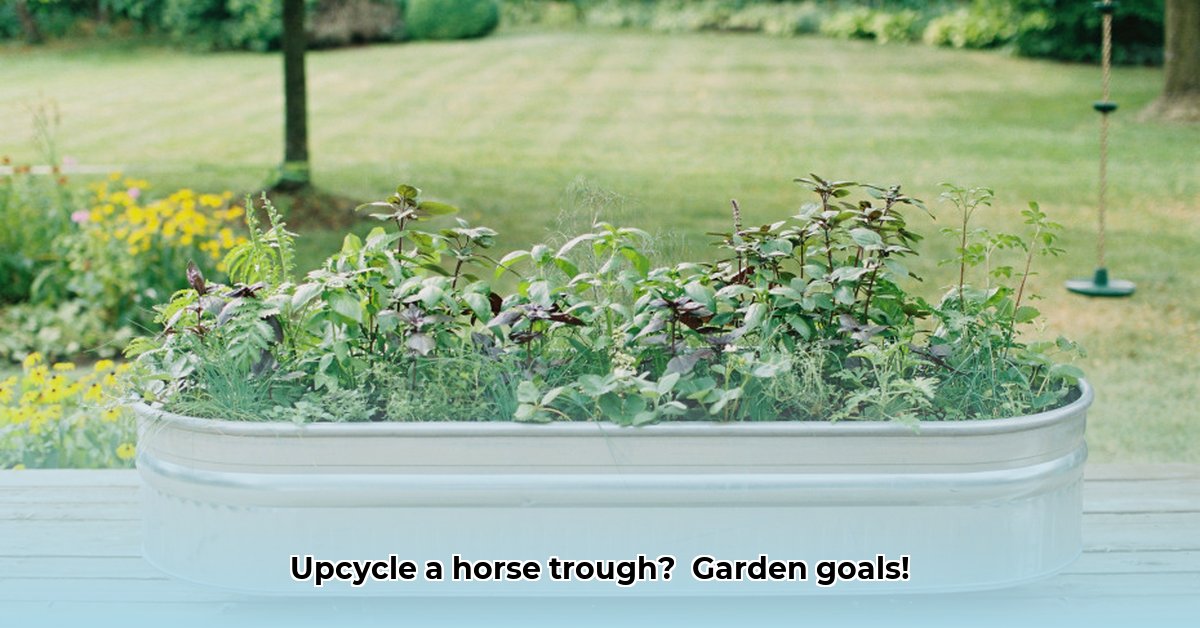
Horse Trough Planters: A Unique Gardening Solution
Thinking outside the box for your garden? Horse troughs from Tractor Supply offer a rustic charm and surprising practicality as planters. Their generous size provides ample space for a variety of plants, and their sturdy construction ensures longevity. But are they right for you? This guide explores the benefits, provides step-by-step planting instructions, and addresses common concerns. Let's get started! Find great deals on troughs at Tractor Supply.
Why Choose a Horse Trough Planter?
Repurposed horse troughs bring a unique, old-fashioned aesthetic to any garden. Their large capacity allows for expansive planting, and the material often retains moisture effectively, benefiting your plants. Their durability is a significant advantage; these aren't flimsy plastic pots. While the initial investment might be higher than some alternatives, the long lifespan and unique style justify the cost for many gardeners. Tractor Supply frequently offers sales, making them even more budget-friendly. Are you ready to elevate your garden's style and functionality?
Preparing Your Horse Trough Planter
Before planting, preparation is key. First, thoroughly clean the trough, removing any debris like hay or dirt. A light sanding can smooth rough surfaces for safety and aesthetics. Next, decide on your planting method: directly in the trough or using individual pots? Pots provide flexibility for rearranging plants or changing soil – a very useful quality for gardening experiments. Regardless of your method, excellent drainage is vital to prevent root rot. Check for drainage holes; add more if necessary.
Planting Your Horse Trough Planter: A Step-by-Step Guide
Horse troughs are remarkably versatile. Their long, shallow shape is ideal for trailing plants like petunias or nasturtiums. Taller herbs or smaller vegetables also thrive, but choose plants appropriate for the space.
- Drainage Layer: Begin with a layer of gravel or broken pottery at the bottom for drainage. This prevents waterlogging.
- Potting Mix: Fill the trough with high-quality potting mix, leaving about an inch or two of space at the top.
- Planting: Carefully place your seedlings or plants, spacing them according to their mature sizes (check plant tags for guidance).
- Watering: Water thoroughly, ensuring the water penetrates the soil, not just sitting on top.
Maintaining Your Horse Trough Planter
Consistent watering is crucial, particularly during hot weather, but avoid overwatering, which leads to root rot. Water when the top inch of soil is dry. Regular fertilization with a balanced fertilizer helps promote healthy growth. Follow fertilizer package instructions for proper application.
Pros and Cons of Horse Trough Planters
Let's weigh the benefits and drawbacks:
| Pros | Cons |
|---|---|
| Rustic charm and unique garden feature | Heavy and difficult to move once planted |
| Ample planting space | May require additional drainage holes |
| Durable and long-lasting | Can be more expensive than other planters |
| Excellent water retention | Potential for cracking in extreme temperatures |
| Versatile for various plant types | Requires regular cleaning and maintenance |
Design Ideas: Unleash Your Creativity
Experiment with different planting strategies:
- Vertical Gardening: Utilize climbing plants for a stunning visual effect.
- Themed Gardens: Create a dedicated herb garden or a vibrant flower display.
- Layered Planting: Combine various plant heights and textures for depth.
Reducing Fertilizer Costs with Sustainable Practices
While a horse trough itself doesn't directly address fertilizer costs, it supports sustainable gardening. "Using less fertilizer doesn't mean smaller yields," says Dr. Emily Carter, Horticulturalist at the University of California, Davis. "Prioritizing soil health is key." Here’s how:
- Soil Testing: Knowing your soil's composition avoids over-fertilizing.
- Compost & Organic Matter: Incorporating compost improves soil structure and reduces the need for synthetic fertilizers.
- Mulching: Conserves moisture and slowly releases nutrients.
- Crop Rotation: Prevents nutrient depletion.
- Efficient Watering: Prevents nutrient runoff.
Using organic fertilizers such as bone meal or compost tea further minimizes environmental impact and reduces costs. A sustainable approach contributes to a healthier environment and your wallet!